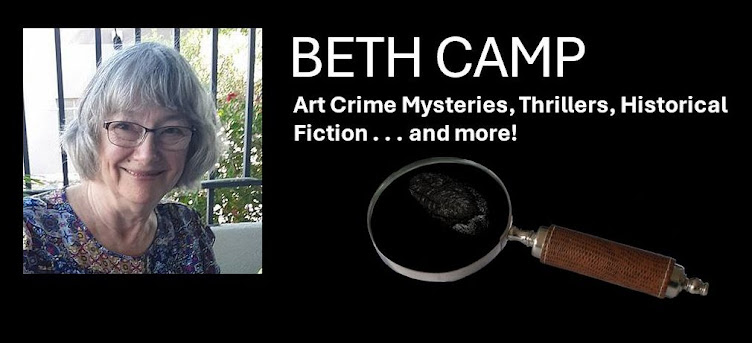 Here we are, once again at the path of accomplishments behind us, farewells for today, and ahead, who knows what awaits?
Here we are, once again at the path of accomplishments behind us, farewells for today, and ahead, who knows what awaits?This last month for April's A to Z Blogging Challenge, I've revisited the research underlying my current novel-in-progress, Rivers of Stone, now in the editing stage. In the process, I've made some discoveries, dug a little deeper into what affects my characters, and reaffirmed my nerdish love of books.
A few discoveries:
--Dr. John Rae, that Arctic explorer who discovered the last remains of Sir John Franklin's ill-fated party lost in the ice, actually wintered over at York Factory in 1845, the time of my book. Because he dared to report his findings, that Franklin's crew resorted to cannibalism in their desperate efforts to survive, he was ostracized and his exploration of Arctic areas unrecognized until very recently. I visited his tomb at St. Magnus Cathedral and saw his house when we visited the Orkney Islands.
 |
| Dr. John Rae's Tomb at St. Magnus Cathedral (Camp 2009) |
 --Country wives were protected somewhat, but their treatment still shocks me. Sometimes the men who 'married' these Metis and native women simply abandoned them and their children; other times, they arranged new husbands. Sometimes the men respected their wives for their entire marriage. I haven't quite figured out how to honor the history of these women. Sylvia Van Kirk's book, Many Tender Ties, added depth to this sad aspect of fur trading history.
--Country wives were protected somewhat, but their treatment still shocks me. Sometimes the men who 'married' these Metis and native women simply abandoned them and their children; other times, they arranged new husbands. Sometimes the men respected their wives for their entire marriage. I haven't quite figured out how to honor the history of these women. Sylvia Van Kirk's book, Many Tender Ties, added depth to this sad aspect of fur trading history.--I could probably fall back into research to find again what I have forgotten, but that would delay the 'finishing' of this story for another year or two. And, after all, is it the history or the story of Catriona and Dougal that I want to tell?
Voltaire once said something like, "Sometimes the quest for perfection gets in the way of accomplishing what is good." He said it in French and more succinctly (the best is the enemy of the good).
My commitment to write as well as possible for this A to Z challenge pulled me away from writing/editing Rivers of Stone. Now, May begins and I shall resume. Each of my books has taken about three years to write. This is the third year for Rivers of Stone, and my goal is to finish this year.
New A to Z people I've met this month and thoroughly enjoyed their posts:
- Ellen Jacobson's The Cynical Sailor
- Lissa Johnston History before 1900
- Liesbet Collaert, Roaming About
- Ryan Carty, flash fiction and other thoughts
- Steven Malone, historical fiction
- Ronel Janse van Vuuren, writing from South Africa
- Bobbie Kinkead, folktales
- Yvonne Ventresca, writer of thrillers
- Pat Garcia, storyteller of fables
- Liz Brownlee, poet and frog lover
- Roland Yeomans, Writing in the Crosshairs
Go forth, A to Z bloggers! May your writing and reading nourish each day!










































